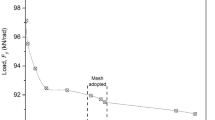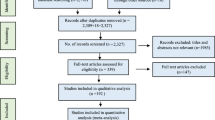Abstract
The relationship between temperature and earth pressure acting on a rigidly framed earth-retaining structure (RFERS) subject to wide temperature variation was explored. A distressed RFERS open concrete garage that retains 11 m (36 ft) of soil was instrumented. After some repairs, movement of the building was monitored and recorded hourly for a period of four and a half years. The monitoring revealed complex temperature-dependent soil–structure interactions. The measured displacements were used to calculate the earth pressure coefficient using closed form equations that were developed by treating the structure as an equivalent cantilever beam, and calibrating the expression using a total of 42,000 FEM models. The data indicated that the coefficient of earth pressure behind the monitored RFERS had a strong linear correlation with temperature. During the cold season the building contracted, and the retained soil followed. During the hot season, the building was unable to overcome the earth pressure, thus it expanded away from the soil, resulting in a cumulative annual displacement. The coefficient of lateral earth pressure changed by approximately 0.005/°C, varying in the range of 1.25–1.5, depending on the season. The study also reveals that thermal cycles, rather than lateral earth pressure, caused some of the structural elements to fail.

















Similar content being viewed by others
Notes
The term drift in this study refers generically to lateral displacement and should not be confused with the seismic drift of structures due to earthquake loading.
References
Aboumossa W, Iskander M (2013) Rigidly framed earth retaining structures. Soil structure interaction of buildings supporting unbalanced lateral earth pressures. Springer Series in Geomechanics and Geo-engineering, Springer, Berlin, 320 pp (in press)
Aboumoussa W (2009) On the behavior of rigidly framed earth retaining structures. Dissertation, Polytechnic Institute of NYU
Aboumoussa W, Iskander M (2003) Thermal movements in concrete: case study of multistory underground car park. J Mater Civ Eng 15(6):545–553
Barker KJ, Carder DR (2001) Performance of an integral bridge over the M1-A1 link road at bramham crossroads. Technical report 52, Transport Research Laboratory, UK
Briaud J (1992) The pressuremeter. Balkema, Rotterdam (ISBN: 90-6191-125-7)
Broms B, Ingelson I (1971) Earth pressure against the abutment of rigid frame bridge. Geotechnique 21(1):15–28
Broms B, Ingelson I (1972) Lateral earth pressure on abridge abutment. European conference on soil mechanics and foundation engineering, vol 1, pp 117–123
DelloRusso S, Juneja G, Gabby B, Dusenberry D (2008) Monitoring and repair of the Milwaukee City Hall Masonry Tower. J Perform Constr Facil 22:197–206
Dorner W (1999) Using Microsoft Excel for Weibull analysis. Quality Digest. http://www.qualitydigest.com/jan99/html/body_weibull.html. Accessed 19 Nov 2012
England G, Tsang C, Dunstan T, Wan R (1997) Drained granular material under cyclic loading with temperature induced soil/structure interaction. Appl Mech Rev 50(10):553–578
England G, Tsang N, Bush D (2000) Integral bridges: a fundamental approach to the time–temperature loading problem. Thomas Telford. ISBN: 978-07277-3541-6
Hughes TG, Harvey RJ (1997) Environmental influences on the shrinkage of concrete block masonry. Mater Struct 30:225–232
Iskander M, Aboumoussa W, Gouvin P (2001) Instrumentation and monitoring of a distressed multi-story underground parking garage. J Perform Constr Facil 15(3):115–123
Iskander M, Parikh S, Aboumoussa W (2012a) Apparent thermal coefficient of expansion of a concrete building, with restraint. ACI J Mater 109(1):63–70 (title no. 109-M07)
Iskander M, Dimond A, Aboumoussa W, Masood F (2012b) Approximate deflection of rigidly framed earth retaining structures due to an unknown earth pressure distribution. Int J Numer Anal Meth Geomech 36:517–532. doi:10.1002/nag.1025
Iskander M, Masood F, Parikh S, Dimond A, Aboumoussa W (2012c) Closed-form expressions for lateral deflection of low-rise rigidly-framed concrete structures. Can J Civ Eng 39(1):20–33. doi:10.1139/l11-104
Naik T, Kraus R, Kumar R (2011) Influence of type of coarse aggregate on the coefficient of thermal expansion of concrete. J Mater Civ Eng 23(4):467–472
Rajkumar C, Wason RC (1999) Investigation of concrete exposed to cyclic thermal loading. In: Proceedings of the international seminar held at the University of Dundee, Scotland, UK, pp 207–214
Rashiduzzafar et al (1984) Deterioration of concrete structures in the environment of the Middle East. J Am Concr Inst 81(1):13–20
Sandford TC, Elgaaly M (1993) Skew effects on backfill pressures at frame bridge abutments, TRR 1415. National Academy Press, Washington, DC, pp 1–11
Vardeman S, Jobe J (2001) Basic engineering data collection and analysis. Brooks/Cole, Pacific Grove
Venecanin SD (1977) Influence of temperature on deterioration of concrete in the Middle East. Concrete (London), pp 31–32
Yang S, Kim N, Kim J, Park J (2003) Experimental measurement of concrete thermal expansion. J East Asia Soc Transp Stud 5:1035–1048
Acknowledgments
The work presented in this paper was funded by Antonucci & Associates Architects and Engineers, and an industrial matching grant to NSF CAREER grant no. CMS 9733064. Slope Indicator, Inc., provided discounted sensors and significant in kind support. The author is grateful to Dr. Walid Aboumoussa for assistance in data collection, and Saumil Parikh for assistance in analysis and presentation of the data. The author is also grateful to Mehdi Omidvar and Zhibo (Chris) Chen for their technical assistance. The author thanks Robert Antonucci, PE; Frank Calfa, PE, of Structural Contracting Services; and Pierre Gouvin, of Geo Instruments; for their assistance in equipment installation and valuable input. Continued NSF support through grants DGE-0337668 and DGE-0741714 is gratefully acknowledged.
Author information
Authors and Affiliations
Corresponding author
Rights and permissions
About this article
Cite this article
Iskander, M. Relationship Between Temperature and Earth Pressure for a Rigidly Framed Earth Retaining Structure. Geotech Geol Eng 31, 519–539 (2013). https://doi.org/10.1007/s10706-012-9606-2
Received:
Accepted:
Published:
Issue Date:
DOI: https://doi.org/10.1007/s10706-012-9606-2




